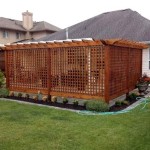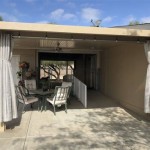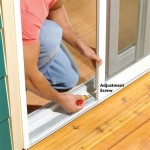Cast Iron vs. Wrought Iron Patio Furniture: A Comprehensive Comparison
When selecting patio furniture, durability, aesthetics, and maintenance requirements are key considerations. Cast iron and wrought iron are two traditional materials often chosen for outdoor settings, each possessing distinct characteristics that cater to different preferences and needs. Understanding the nuances of each material allows for informed decision-making, ensuring the chosen furniture complements the outdoor space and withstands the rigors of prolonged exposure to the elements.
This article provides a detailed comparison of cast iron and wrought iron patio furniture, examining their manufacturing processes, durability, aesthetic qualities, weight, maintenance requirements, and cost implications. By exploring these aspects, potential buyers can gain a comprehensive understanding of the strengths and weaknesses inherent in each material, enabling them to select the furniture that best aligns with their specific requirements and long-term expectations.
Manufacturing Processes: A Tale of Two Metals
The fundamental difference between cast iron and wrought iron lies in their manufacturing processes. These processes significantly influence the material's properties, influencing its strength, malleability, and overall performance in outdoor environments.
Cast iron is produced by melting iron ore and pouring the molten metal into a mold. This process allows for intricate designs and complex shapes to be created relatively easily. The molten iron cools and solidifies within the mold, resulting in a solid piece. However, the high carbon content in cast iron (typically between 2% and 4%) makes it relatively brittle. This brittleness means that cast iron is susceptible to cracking under significant stress or impact.
Wrought iron, on the other hand, is manufactured through a more labor-intensive process. It involves repeatedly heating and hammering the iron, which reduces the carbon content and aligns the grain structure of the metal. This process results in a material that is significantly stronger and more ductile than cast iron. “Wrought” literally means “worked,” reflecting the extensive manual labor involved in its production. The lower carbon content (typically less than 0.1%) gives wrought iron its characteristic tensile strength and makes it far more resistant to bending and breaking.
Historically, wrought iron was the preferred material for structural applications due to its superior strength and resistance to corrosion. However, the labor-intensive manufacturing process made it significantly more expensive to produce. As a result, cast iron gradually replaced wrought iron in many applications, including patio furniture, due to its lower cost and ease of production, despite its inherent limitations in strength and durability.
Durability and Longevity: Facing the Elements
The ability of patio furniture to withstand the elements is a paramount consideration. Both cast iron and wrought iron are inherently durable materials, capable of lasting for decades with proper care. However, their susceptibility to corrosion and physical damage differs significantly, influencing their long-term performance in outdoor settings.
Cast iron is prone to rust if its protective coating is compromised. The high iron content readily reacts with oxygen and moisture, resulting in the formation of iron oxide. Rust can weaken the structural integrity of the furniture, leading to eventual failure. The porous nature of some cast iron further exacerbates this issue, allowing moisture to penetrate the material and accelerate corrosion from within.
Wrought iron exhibits superior resistance to corrosion compared to cast iron. The lower carbon content and the aligned grain structure create a more impermeable barrier against moisture and oxygen. While wrought iron is not entirely immune to rust, the process occurs at a significantly slower rate. Furthermore, the density and strength of wrought iron make it more resistant to bending, denting, and other forms of physical damage.
Regular maintenance is crucial for both cast iron and wrought iron furniture to mitigate the effects of weather exposure. This includes applying protective coatings like paint or powder coating, regularly cleaning the furniture to remove dirt and debris, and promptly addressing any signs of rust or damage. However, the underlying material properties of wrought iron provide an inherent advantage in terms of longevity and resistance to the elements.
In regions with harsh weather conditions, particularly those with high humidity or exposure to saltwater, wrought iron is generally the more durable choice. Its superior corrosion resistance and structural strength provide a greater degree of protection against the damaging effects of prolonged exposure to the elements.
Aesthetic Considerations: Form and Function
The aesthetic appeal of patio furniture is a subjective but crucial factor in the selection process. Both cast iron and wrought iron offer unique aesthetic qualities, contributing to the overall ambiance of the outdoor space. The manufacturing processes influence the types of designs that can be achieved with each material.
Cast iron's ability to be molded into intricate shapes allows for elaborate and decorative designs. Furniture made from cast iron often features ornate details, such as floral patterns, scrollwork, and complex geometric shapes. This makes it suitable for creating a traditional, Victorian, or romantic aesthetic in the outdoor space. The relative ease of casting enables manufacturers to produce furniture with complex curves and embellishments that would be difficult or impossible to achieve with wrought iron.
Wrought iron, while also capable of intricate designs, tends to have a more streamlined and handcrafted appearance. The process of heating and hammering the iron lends itself to more linear and geometric forms. Wrought iron furniture often features clean lines, simple curves, and a sense of solidity and strength. This makes it suitable for creating a modern, rustic, or industrial aesthetic in the outdoor space.
The finish applied to the furniture also plays a significant role in its aesthetic appeal. Both cast iron and wrought iron can be painted, powder-coated, or left with a natural finish. The choice of finish can significantly alter the appearance of the furniture, allowing it to be customized to match the surrounding décor.
Ultimately, the choice between cast iron and wrought iron depends on the desired aesthetic. Cast iron offers greater flexibility in terms of elaborate designs, while wrought iron provides a more streamlined and handcrafted look. Considering the overall style and ambiance of the outdoor space is crucial in selecting the furniture that best complements the existing environment.
Weight and Stability: Anchoring the Outdoor Space
The weight of patio furniture is a practical consideration, influencing its stability, portability, and ease of use. Both cast iron and wrought iron are relatively heavy materials, providing a sense of solidity and stability in outdoor settings. However, there are significant differences in their weight-to-strength ratio.
Cast iron is generally heavier than wrought iron for a given size and shape. This is due to the higher density of cast iron and the presence of impurities within the metal. The weight of cast iron furniture can provide stability, particularly in windy conditions. However, it can also make it difficult to move or rearrange the furniture as needed.
Wrought iron, while still a heavy material, is generally lighter than cast iron due to its higher strength-to-weight ratio. This means that wrought iron furniture can achieve the same level of structural integrity with less material. The relative lightness of wrought iron can make it easier to move and rearrange the furniture, while still providing adequate stability in outdoor settings.
The weight of patio furniture can also influence its ease of storage. Storing heavy furniture during the off-season can be challenging, particularly for individuals with limited physical strength or storage space. Consider the practicality of moving and storing the furniture when making your selection.
The design of the furniture also plays a role in its stability. Furniture with a low center of gravity and a wide base is generally more stable than furniture with a high center of gravity and a narrow base. Consider the overall design of the furniture and its ability to withstand windy conditions when making your selection.
Maintenance Requirements: Preserving the Investment
Regular maintenance is essential for preserving the appearance and longevity of patio furniture. Both cast iron and wrought iron require routine cleaning and occasional repairs to prevent rust, corrosion, and other forms of damage. However, the specific maintenance requirements differ significantly depending on the material and the environmental conditions.
Cast iron requires more diligent maintenance than wrought iron due to its susceptibility to rust. Regular cleaning with soap and water is necessary to remove dirt, debris, and other contaminants that can accelerate corrosion. Applying a protective coating, such as paint or powder coating, is essential to prevent rust formation. Any signs of rust should be promptly addressed by sanding down the affected area and applying a rust-inhibiting primer and paint.
Wrought iron is relatively low-maintenance compared to cast iron. Regular cleaning with soap and water is still recommended to remove dirt and debris. However, the superior corrosion resistance of wrought iron means that it requires less frequent painting and rust repair. Applying a protective coating can further enhance its resistance to the elements, but it is not as critical as it is for cast iron.
The frequency of maintenance also depends on the environmental conditions. Furniture exposed to harsh weather conditions, such as high humidity, saltwater, or extreme temperatures, will require more frequent maintenance than furniture located in milder climates. Consider the specific environmental conditions in your area when determining the appropriate maintenance schedule.
Professional restoration services are available for both cast iron and wrought iron furniture. These services can restore damaged or deteriorated furniture to its original condition, extending its lifespan and preserving its aesthetic appeal. However, professional restoration services can be expensive, so it is important to weigh the cost against the value of the furniture.
Cost Implications: Balancing Quality and Budget
The cost of patio furniture is a significant consideration for most buyers. The price of cast iron and wrought iron furniture varies depending on the design, size, and quality of the materials. However, there are general trends in pricing that reflect the relative cost of manufacturing and the inherent value of each material.
Cast iron furniture is generally less expensive than wrought iron furniture. This is due to the relatively simple and inexpensive manufacturing process. The ability to mold cast iron into complex shapes also allows for mass production, further reducing the cost. However, the lower durability and higher maintenance requirements of cast iron may result in higher long-term costs.
Wrought iron furniture is typically more expensive than cast iron furniture. The labor-intensive manufacturing process and the superior material properties contribute to the higher cost. However, the greater durability, lower maintenance requirements, and higher resale value of wrought iron may offset the higher initial cost in the long run.
The price of patio furniture can also vary depending on the retailer and the brand. Comparing prices from different sources and considering factors such as shipping costs and warranty coverage is essential. Investing in high-quality furniture from a reputable manufacturer can ensure longevity and satisfaction.
Budget considerations should be balanced with long-term value. While cast iron may be more affordable initially, wrought iron's durability and lower maintenance can make it a more cost-effective choice over time. Evaluating both the upfront cost and the potential long-term expenses is crucial in making a financially sound decision.

Wrought Iron Vs Cast Aluminum Patio Furniture Ions

Elegance In Iron Why Wrought Patio Furniture Is A Must For Your Outdoor Setting Minneopa Orchards

Wrought Iron Vs Cast Aluminum Patio Furniture Ions

Difference Wrought Iron Cast Garden City Metal

Ask A Metallurgist Wrought Iron Vs Cast Metal Casting Blog

Wrought Iron Patio Furniture Patioliving

Cast And Wrought Iron Patio Garden Furniture

The 7 Most Durable Outdoor Furniture Frames Elegance Patio Design Center

Wrought Iron Patio Furniture

Ask A Metallurgist Wrought Iron Vs Cast Metal Casting Blog
Related Posts








